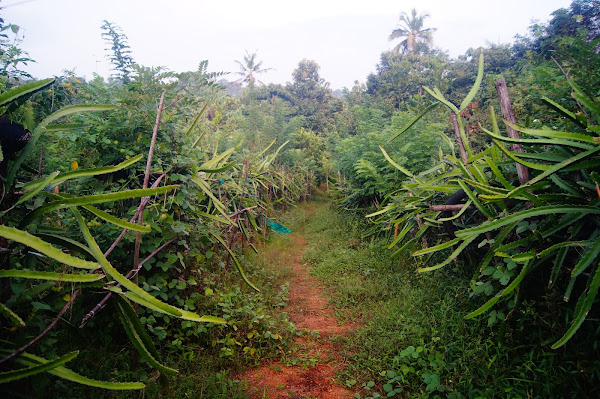Status check of our beautiful rambutan tree!
The Growth of Rambutan Trees at Liz Pepper Gardens Forest Farm
The Growth Journey:
The rambutan trees (Nephelium lappaceum) at Liz Pepper Gardens Forest Farm have undergone a splendid growth journey, reflecting the farm's commitment to cultivating a variety of tropical fruits. These trees, native to Southeast Asia, have found a second home in the farm's fertile soil. Carefully nurtured from saplings to looking forward to mature fruit-bearing trees.
The farm's meticulous approach to cultivation involves providing optimal conditions for the rambutan trees, including well-drained soil, ample sunlight, and regular pruning. The result is a thriving grove where these trees bear clusters of vibrant, hairy fruits that are a delight to both the eye and the palate.
Uses of Rambutan Trees:
1. Culinary Delicacy:
Rambutans are renowned for their sweet and juicy flesh, making them a delectable treat in various culinary applications. From enjoying them fresh to incorporating them into salads, desserts, and beverages, the versatility of rambutans in the kitchen is boundless.
2. Rich in Nutrients:
Rambutans are a rich source of essential nutrients, including vitamin C, fiber, and antioxidants. Consuming these fruits contributes to overall health and wellness, supporting immune function and aiding in digestion.
3. Cosmetic and Medicinal Applications:
The seeds of rambutans contain oil that is often used in cosmetic products. Additionally, traditional medicine recognizes the fruit's potential in addressing ailments such as diabetes and fever, showcasing the holistic benefits of rambutans.
Benefits of Rambutan Trees:
1. Biodiversity and Ecosystem Health:
Rambutan trees, like other fruit-bearing trees, contribute to the biodiversity of Liz Pepper Gardens Forest Farm. They attract pollinators, such as bees, and foster a thriving ecosystem that goes beyond the fruit harvest, promoting a balanced and sustainable environment.
2. Economic Opportunities
The cultivation of rambutan trees not only adds diversity to the farm's produce but also creates economic opportunities for the local community. The sale of rambutans and related products contributes to the farm's sustainability and supports livelihoods.
3. Tropical Agricultural Innovation
Rambutan cultivation represents an innovative approach to tropical agriculture at Liz Pepper Gardens Forest Farm. By integrating diverse tropical fruits into the farm's landscape, the team demonstrates how sustainable practices can flourish, even in challenging climates.
Why Rambutan Trees are Important:
1. Cultural Significance
Rambutans hold cultural significance in many Southeast Asian countries, often symbolizing good fortune and prosperity. The inclusion of rambutan trees at Liz Pepper Gardens Forest Farm adds a touch of cultural richness to the agricultural landscape.
2. Diversification of Agriculture
The cultivation of rambutan trees exemplifies the importance of diversifying agricultural practices. In the face of changing climates and global demands, farms like Liz Pepper Gardens showcase the resilience and adaptability of agriculture through the cultivation of a variety of crops.
3. Global Impact
The global demand for exotic fruits is on the rise, and rambutans have gained popularity in international markets. By cultivating these tropical gems, Liz Pepper Gardens Forest Farm not only contributes to local economies but also plays a role in meeting the growing demand for diverse and unique fruits on a global scale.
As we witness the radiant growth of rambutan trees at Liz Pepper Gardens Forest Farm, it becomes evident that the farm's commitment to biodiversity, sustainability, and agricultural innovation extends beyond traditional boundaries. The rambutan orchard stands to the farm's vision of creating a harmonious ecosystem where tropical fruits thrive, providing not only economic benefits but also cultural richness and global impact. In this journey of growth and abundance, rambutan trees emerge as ambassadors of a sustainable and diverse agricultural future.



Comments
Post a Comment